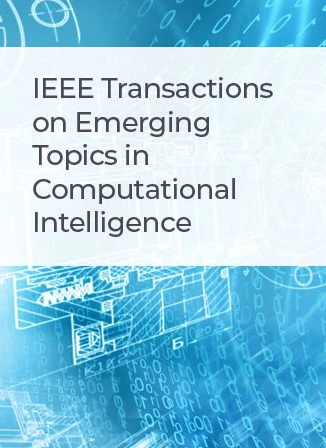基于可扩展合作图的自聚类分层多智能体强化学习
IF 5.3
3区 计算机科学
Q1 COMPUTER SCIENCE, ARTIFICIAL INTELLIGENCE
IEEE Transactions on Emerging Topics in Computational Intelligence
Pub Date : 2024-09-04
DOI:10.1109/TETCI.2024.3449873
引用次数: 0
摘要
多智能体强化学习(MARL)在解决许多合作挑战方面取得了成功。然而,经典的非分层MARL算法仍然不能解决各种需要分层合作行为的复杂多智能体问题。在非分层算法中学习到的合作知识和策略是隐式的、不可解释的,从而限制了现有知识的整合。本文提出了一种新的分层MARL模型——分层合作图学习(HCGL),用于解决一般的多智能体问题。HCGL有三个组成部分:实现自聚类协作的动态可扩展协作图(ECG);一组调整心电拓扑的图算子;以及用于训练这些图运算符的MARL优化器。HCGL与其他MARL模型的关键区别在于,智能体的行为是由ECG的拓扑结构而不是策略神经网络来引导的。心电图是一个三层图,包括代理节点层、集群节点层和目标节点层。为了根据环境条件的变化对心电拓扑进行操作,训练了4个图算子来动态调整心电的边缘连接。ECG的层次特征提供了一种独特的方法,将原始动作(智能体执行的动作)和协作动作(集群执行的动作)合并到一个统一的动作空间中,使我们能够将基本的协作知识集成到一个可扩展的接口中。在我们的实验中,HCGL模型在具有稀疏奖励的多智能体基准测试中表现出出色的性能。我们还验证了HCGL可以很容易地转移到大规模场景中,并且具有很高的零射击转移成功率。本文章由计算机程序翻译,如有差异,请以英文原文为准。
Self-Clustering Hierarchical Multi-Agent Reinforcement Learning With Extensible Cooperation Graph
Multi-Agent Reinforcement Learning (MARL) has been successful in solving many cooperative challenges. However, classic non-hierarchical MARL algorithms still cannot address various complex multi-agent problems that require hierarchical cooperative behaviors. The cooperative knowledge and policies learned in non-hierarchical algorithms are implicit and not interpretable, thereby restricting the integration of existing knowledge. This paper proposes a novel hierarchical MARL model called Hierarchical Cooperation Graph Learning (HCGL) for solving general multi-agent problems. HCGL has three components: a dynamic Extensible Cooperation Graph (ECG) for achieving self-clustering cooperation; a group of graph operators for adjusting the topology of ECG; and an MARL optimizer for training these graph operators. HCGL's key distinction from other MARL models is that the behaviors of agents are guided by the topology of ECG instead of policy neural networks. ECG is a three-layer graph consisting of an agent node layer, a cluster node layer, and a target node layer. To manipulate the ECG topology in response to changing environmental conditions, four graph operators are trained to adjust the edge connections of ECG dynamically. The hierarchical feature of ECG provides a unique approach to merge primitive actions (actions executed by the agents) and cooperative actions (actions executed by the clusters) into a unified action space, allowing us to integrate fundamental cooperative knowledge into an extensible interface. In our experiments, the HCGL model has shown outstanding performance in multi-agent benchmarks with sparse rewards. We also verify that HCGL can easily be transferred to large-scale scenarios with high zero-shot transfer success rates.
求助全文
通过发布文献求助,成功后即可免费获取论文全文。
去求助
来源期刊

IEEE Transactions on Emerging Topics in Computational Intelligence
Mathematics-Control and Optimization
CiteScore
10.30
自引率
7.50%
发文量
147
期刊介绍:
The IEEE Transactions on Emerging Topics in Computational Intelligence (TETCI) publishes original articles on emerging aspects of computational intelligence, including theory, applications, and surveys.
TETCI is an electronics only publication. TETCI publishes six issues per year.
Authors are encouraged to submit manuscripts in any emerging topic in computational intelligence, especially nature-inspired computing topics not covered by other IEEE Computational Intelligence Society journals. A few such illustrative examples are glial cell networks, computational neuroscience, Brain Computer Interface, ambient intelligence, non-fuzzy computing with words, artificial life, cultural learning, artificial endocrine networks, social reasoning, artificial hormone networks, computational intelligence for the IoT and Smart-X technologies.
 求助内容:
求助内容: 应助结果提醒方式:
应助结果提醒方式:


